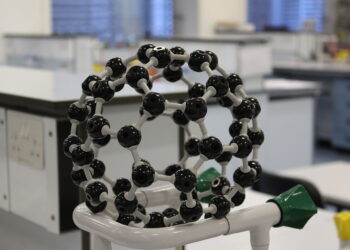In case you’re wondering, what you’re looking at is a silicon chip, only 1 millimeter square that was used by researchers to prove how data can be stored in the magnetic spin of atoms – and how it can then be accessed electronically. Physicists from the University of Utah have managed to store information in the magnetic spin of a phosphorus atom, which is a major step in developing new types of memory for both traditional and quantum computers.
“The length of spin memory we observed is more than adequate to create memories for computers,” says Christoph Boehme (pronounced Boo-meh), an associate professor of physics and senior author of the new study, published Friday, Dec. 17 in the journal Science. “It’s a completely new way of storing and reading information.”
The technical difficulties they had to face were huge; the apparatus they used only works at 3.2 Kelvin grades, which is just slightly above absolute zero – the temperature at which all atoms reach a standstill ! Also, it had to be surrounded by an electric field roughly 200.000 greater than that of the Earth.
“Yes, you could immediately build a memory chip this way, but do you want a computer that has to be operated at 454 degrees below zero Fahrenheit and in a big national magnetic laboratory environment?” Boehme says. “First we want to learn how to do it at higher temperatures, which are more practical for a device, and without these strong magnetic fields to align the spins.”
As for obtaining an electrical readout of data held within atomic nuclei, “nobody has done this before,” he adds.







